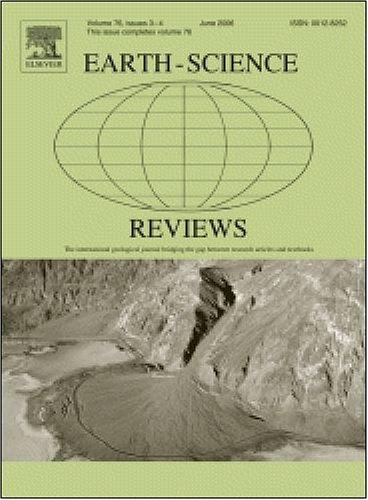Thickness of the stratigraphic record of Britain: How the fidelity of geological and fossil data is unrelated to rock quantity
IF 10.8
1区 地球科学
Q1 GEOSCIENCES, MULTIDISCIPLINARY
引用次数: 0
Abstract
The sedimentary-stratigraphic record is the principal repository of empirical historic evidence for evolution and deep time environments. However, the record has a temporal incompleteness and inconsistency to its extensive quantity, driven by the spatial heterogeneity of deposition and erosion. This is argued to bias intensive fossil records, with correlations apparent between fossil diversity and mapped rock area from different intervals. However, mapped rock area is a poor proxy for strata accessible for fossil studies because most is concealed. Additionally, spatially diminutive older rocks commonly sample a greater stratigraphic transect per unit exposure area than widespread younger rocks because the tectonic forces that drive recycling additionally result in tilting. We calculate observable vertical stratigraphic thickness throughout geologic history for southern Britain and show that potential sample availability increases with age, in contrast to general models of rock survivorship. Using this subsample of the sedimentary-stratigraphic record as a calibration sample for the global record, we find no correlation between available stratigraphic thickness and palaeobiodiversity, except in flat-lying strata. We demonstrate instances where the first occurrences of fossil genera appear robust because there is high availability of suitable host rock pre-dating them. Our work suggests that preservation biases induced by variability in rock quantity have been significantly overstated and that local tectonic history renders different regions as stratigraphic hotspots for specific intervals, in which intensive high-veracity fossil records have exceptional value for elucidating global trends and timing in evolutionary history. The British non-marine Palaeozoic record is highlighted as such an example, with high-fidelity palynological records of plant evolution and ichnological records of animal terrestrialization.
沉积-地层记录是进化和深部时间环境的主要历史经验证据库。然而,由于沉积和侵蚀的空间异质性,该记录在时间上不完整,在数量上也不一致。这被认为是密集化石记录的偏差,不同时期的化石多样性与绘制的岩石面积之间存在明显的相关性。然而,绘制的岩石面积并不能代表可用于化石研究的地层,因为大部分地层都被掩盖了。此外,与广泛分布的较年轻岩石相比,空间上较小的较古老岩石通常在单位暴露面积上采样的地层横断面更大,因为驱动循环的构造力还会导致倾斜。我们计算了英国南部整个地质历史时期可观察到的垂直地层厚度,结果表明潜在的样本可用性随着年龄的增长而增加,这与岩石存活率的一般模型截然不同。将这一沉积-地层记录的子样本作为全球记录的校准样本,我们发现可用地层厚度与古生物多样性之间没有相关性,平地地层除外。我们展示了一些实例,在这些实例中,化石属的首次出现显得非常稳健,因为在它们出现之前有大量合适的寄主岩。我们的研究表明,岩石数量变化引起的保存偏差被严重夸大了,当地的构造历史使不同地区成为特定时期的地层热点,在这些地区,密集的高容量化石记录对于阐明进化史的全球趋势和时间具有特殊价值。英国非海相古生代记录就是这样一个例子,它具有植物进化的高保真古植物学记录和动物陆生化的图像学记录。
本文章由计算机程序翻译,如有差异,请以英文原文为准。
求助全文
约1分钟内获得全文
求助全文
来源期刊

Earth-Science Reviews
地学-地球科学综合
CiteScore
21.70
自引率
5.80%
发文量
294
审稿时长
15.1 weeks
期刊介绍:
Covering a much wider field than the usual specialist journals, Earth Science Reviews publishes review articles dealing with all aspects of Earth Sciences, and is an important vehicle for allowing readers to see their particular interest related to the Earth Sciences as a whole.
 求助内容:
求助内容: 应助结果提醒方式:
应助结果提醒方式:


